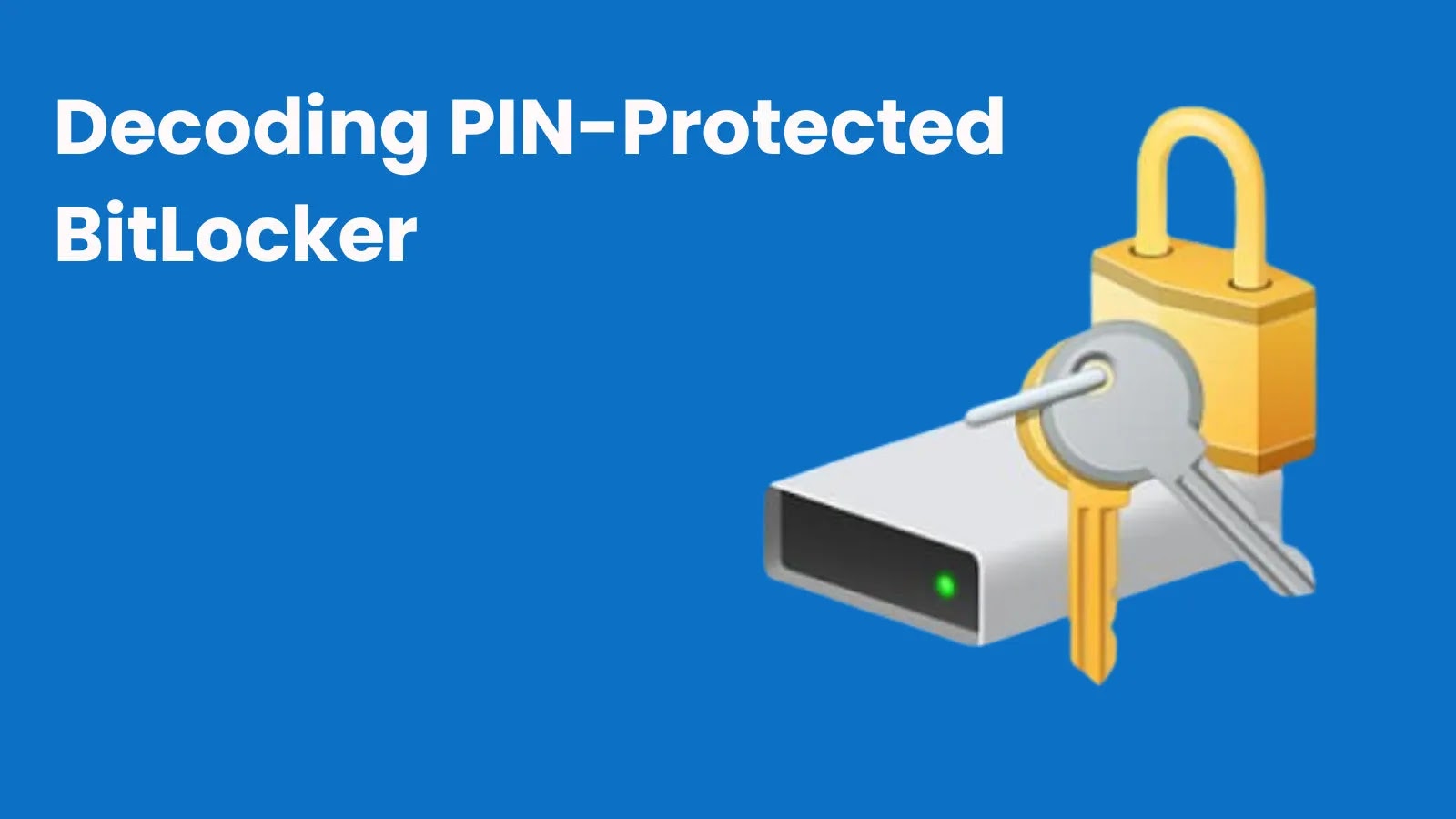
Decoding PIN-Protected BitLocker Through TPM SPI Analysis To Decrypt And Mount The Disks
BitLocker encryption has long been a cornerstone of data protection, especially for portable devices. Its appeal lies in its ability to safeguard sensitive data even if a device is lost or stolen. However, recent research has unveiled a sophisticated method to circumvent even PIN-protected BitLocker configurations, fundamentally challenging our understanding of its resilience. This isn’t about finding a cryptographic flaw; instead, it’s a physical attack that leverages insider access and specialized hardware to intercept critical communication.
Understanding the Threat: Beyond PIN Protection
For years, the focus of BitLocker bypass techniques often centered on scenarios where a device was stolen, and the encryption key was stored in the Trusted Platform Module (TPM) without additional PIN protection. In such cases, attackers might attempt to extract the key directly from the TPM or exploit cold boot attacks. However, this new research, as highlighted by Cyber Security News, shifts the paradigm to PIN-secured BitLocker setups. This scenario specifically targets insider threats – individuals with physical access to a device and knowledge of its credentials – who aim to achieve SYSTEM-level access and decrypt protected drives.
The Attack Vector: TPM SPI Bus Analysis
The core of this advanced decryption technique lies in intercepting communications between the CPU and the TPM via the Serial Peripheral Interface (SPI) bus. The TPM plays a crucial role in BitLocker’s security, storing cryptographic keys and performing integrity checks. When a PIN is entered, the CPU communicates with the TPM to verify the PIN and release the necessary encryption keys to unlock the drive.
By physically probing the SPI bus, an attacker can capture this communication. While the BitLocker key itself isn’t directly transmitted in plaintext, the sequence of operations and the data exchanged can be analyzed to extract or reconstruct the necessary information to decrypt the drive. This method requires specialized hardware and a deep understanding of BitLocker’s operational flow and the TPM’s interaction with the system.
No True Bypass, But a Significant Compromise
It’s crucial to understand that this technique does not represent a “true bypass” of BitLocker’s cryptographic strength. The encryption itself remains robust. Instead, it’s an exploit that leverages physical access and insider knowledge (the PIN) to intercept the key material as it’s being used. The method effectively “unlocks” the drives, allowing an attacker to decrypt and mount them as if they had legitimate access. This demonstrates that even a strong cryptographic primitive like AES, when coupled with a Hardware Security Module (HSM) like the TPM, can be vulnerable to side-channel or physical attacks if the trust boundaries are compromised.
Implications for Data Security and Insider Threats
This research has significant implications, particularly in environments where insider threats are a concern. Organizations often rely on BitLocker with PINs as a robust defense against data exfiltration or unauthorized access. However, this technique reveals a critical gap: if an individual with physical access and the PIN (either known or obtained through social engineering) decides to compromise a system, the data protected by BitLocker is no longer as secure as previously believed.
The ability to decrypt and mount drives in this manner can lead to:
- Unauthorized access to sensitive data.
- Data exfiltration.
- Compromise of system integrity.
- Potential for further lateral movement within a network.
Remediation Actions
While this attack requires physical access and specific technical knowledge, organizations can implement several measures to mitigate the risk:
- Enhanced Physical Security: Implement strict physical security controls for all devices, especially laptops and portable storage. This includes secure storage, monitoring, and robust access control to prevent unauthorized physical tempering.
- Strong PIN Policies: Enforce strong, complex PIN policies for BitLocker. While the PIN itself is known in this attack scenario, longer and more complex PINs can deter brute-force attempts if other factors are compromised.
- Regular Security Audits: Conduct frequent security audits and penetration testing, specifically including physical security assessments to identify vulnerabilities that could lead to SPI bus probing.
- Endpoint Detection and Response (EDR): Utilize advanced EDR solutions to monitor for unusual system behavior or unauthorized hardware access, which might indicate an attempted physical attack.
- Data Minimization and Segmentation: Practice data minimization, ensuring that only necessary data is stored on devices. Implement data segmentation to limit the impact an attacker can have even if one drive is compromised.
- User Training and Awareness: Educate employees about the risks of insider threats and the importance of physical device security.
- Supply Chain Security: Ensure the integrity of the hardware supply chain to prevent the introduction of compromised components or backdoors that could facilitate such attacks.
Tools for Analysis and Mitigation
| Tool Name | Purpose | Link |
|---|---|---|
| Logic Analyzers (e.g., Saleae Logic) | Hardware for capturing and analyzing digital signals on buses like SPI. | https://www.saleae.com/ |
| Bus Pirates | Multi-purpose tool for interfacing with various serial protocols, including SPI. | http://dangerousprototypes.com/docs/Bus_Pirate |
| OpenOCD | On-chip debugging, programming, and boundary-scan testing for various embedded systems. Can be adapted for certain bus analysis. | https://openocd.org/ |
| BitLocker Management Tools (Microsoft) | For enforcing and managing BitLocker policies, including PIN requirements and recovery options. | https://learn.microsoft.com/en-us/windows/security/information-protection/bitlocker/bitlocker-management/ |
Conclusion
The research into decoding PIN-protected BitLocker via TPM SPI analysis highlights a critical aspect of cybersecurity: the interplay between cryptographic strength and physical security. While BitLocker’s encryption remains robust, its implementation can be vulnerable to sophisticated physical attacks if an insider with credentials gains access. This underscores the need for a multi-layered security approach that combines strong cryptographic controls with stringent physical security measures, robust insider threat programs, and continuous monitoring to protect sensitive data effectively.





